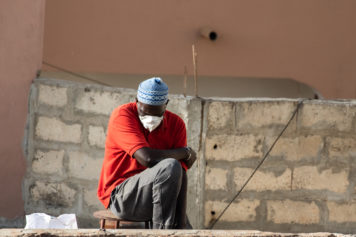
Tummy Ruslan Dashinsky/iStockphoto.com
African-American teens are having fewer babies than ever, according to a new report from the Centers for Disease Control and Prevention.
The CDC released its Morbidity and Mortality Weekly Report on Thursday. Researchers found a 41 percent decrease across all racial and ethnic categories since 2006, but the most dramatic change was in Black and Hispanic teens, whose rates dropped by 44 percent and 51 percent, respectively.
Teen pregnancy rates in the U.S. have steadily declined since their peak in the 1990s, yet disparities continue to persist for minorities and economically disadvantaged. Birthrates among teens aged 15 – 19 dropped a record low from 61.8 to 24.2 births per 1,000 (61 percent) between 1991 and 2014, but the rates remained twice as high for Black and Non-Black Hispanic teens during the same time period.
“The United States has made remarkable progress in reducing both teen pregnancy and racial and ethnic differences, but the reality is, too many American teens are still having babies,” CDC Director Tom Frieden said in a statement.
CDC officials partnered with the U.S. Department of Health and Human Services Office of Adolescent Health to design community programs targeting nine areas with the highest rates. These programs reached out to local schools, churches, and health care providers to produce “culturally appropriate,” “evidence-based” materials and activities for high-risk teens.
“By better understanding the many factors that contribute to teen pregnancy, we can better design, implement, evaluate and improve prevention interventions and further reduce disparities,” Frieden said.
There were wide variations in state and county-level data. New Jersey birthrates among white, Black and Hispanic teens were all lower than the national average. Over in Nebraska, birthrates for white teens reflected the national rate, while Black and Hispanic rates significantly surpassed the groups’ national rates.
“These data underscore that the solution to our nation’s teen pregnancy problem is not going to be a one-size-fits-all. Teen birth rates vary greatly across state lines and even within states,” lead author Lisa Romero said.
“Together, we can work to implement proven prevention programs that take into account unique, local needs,” Romero said.
The abundance of social programs no doubt contribute to the lower birthrates, but experts say that poverty and geography play the biggest roles in high rates among teens of color.
Counties in the South and Southwest had the highest rates of pregnancies. The South, which traditionally holds the highest percentage of the country’s Black population is also the region with the highest poverty rates.
According to the USDA Economic Research Service, the South has the highest concentration of impoverished non-metro counties.
Research shows that with poverty comes low-quality housing, health care, education and jobs.
“We’re talking about income; we’re talking about sub-par education … with no education about sex and your body,” UCLA sex researcher and psychologist Gail Wyatt told Stateline, a Pew Charitable Trust publication in 2015.
“This pretty much leaves these girls extremely vulnerable…. It’s simply an incompatible combination of circumstances that these girls are involved and captured in.”


